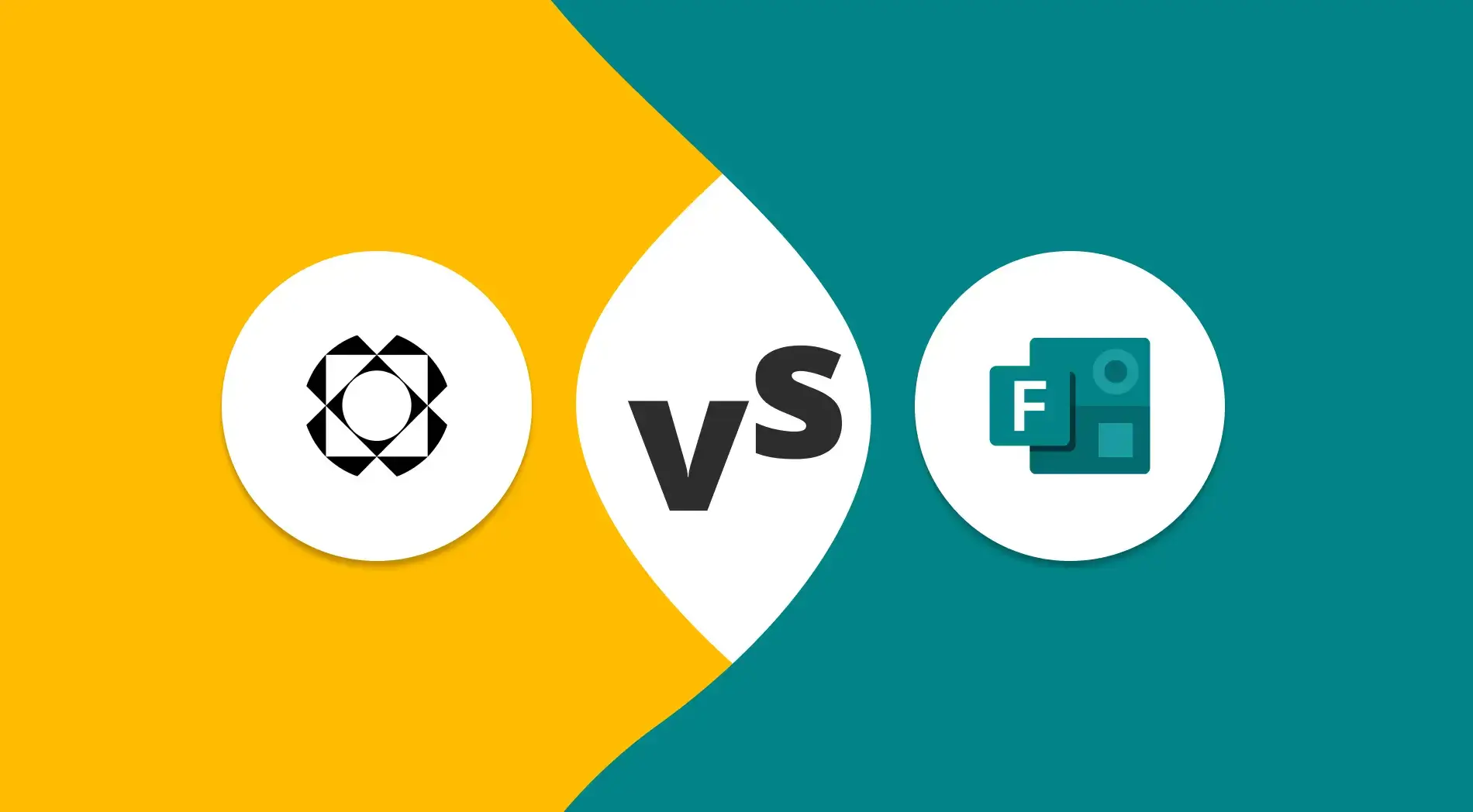As our world becomes digital, businesses have moved their operations online. In this way, business owners and startups now use web-based platforms to prepare and manage their documents, making their work more efficient and fast. Online forms are essential for data collection processes like customer feedback and employee evaluations, so every business team should know how to craft effective forms.
If you are feeling stressed or uncertain about your team's ability to manage online documentation, don’t worry. In this helpful article, we will compare two well-known form builder tools, Paperform and Microsoft Forms, to help you choose the one that will boost your business. Additionally, you will discover a fantastic alternative that could become your best decision.
Paperform vs. Microsoft Forms at first glance
At first glance, Paperform and Microsoft Forms are two popular tools used for creating and managing online forms or documents for a wide range of purposes, whether for business or personal needs. However, as you delve deeper, you will discover their differing pricing plans, specific features, interface approaches, and even some unexpected limitations.
Paperform is an online form builder that works much like a Word document. The platform supports slash commands, enabling users to easily add questions, text, images, and videos when building forms. It offers built-in e-commerce capabilities for online sales and integrates with a vast amount of tools. With its user-friendly interface, Paperform is a powerful tool for efficient form management.
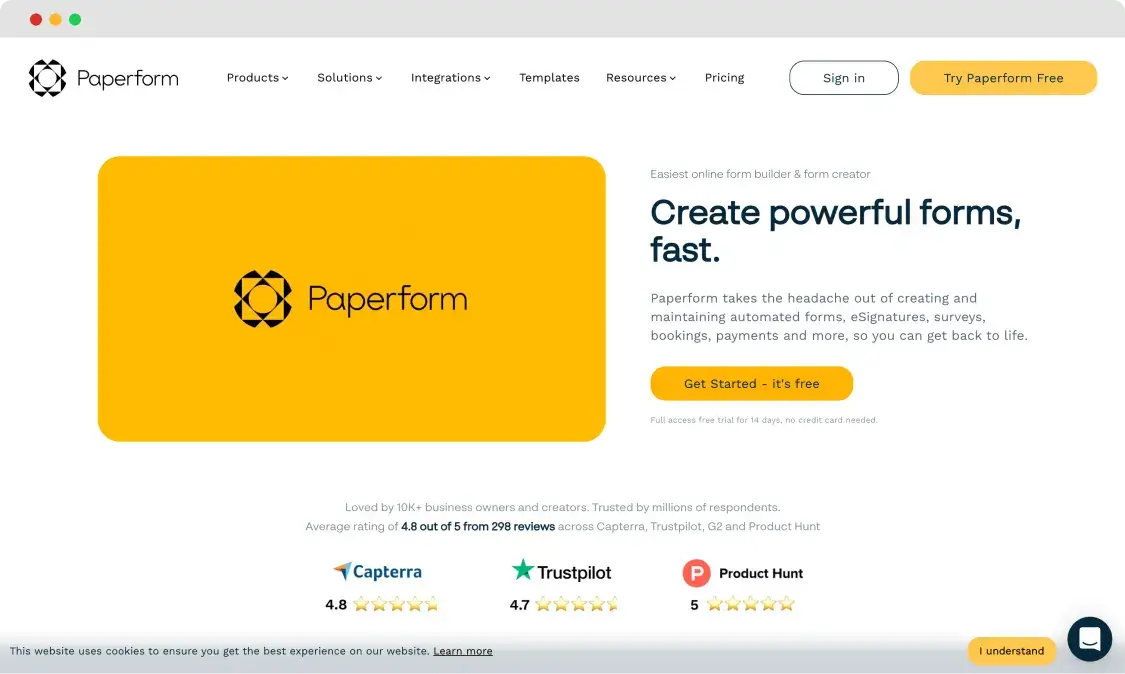
The home page of Paperform
Microsoft Forms is a form builder tool that is part of the Microsoft 365 software suite. It offers a simple interface and many business-friendly features. Its intuitive design simplifies creating forms, helping users gather real-time responses for surveys, polls, feedback, and event planning. Additionally, Microsoft Forms features AI-powered tools and question recommendations, which can help streamline the form-creation process.
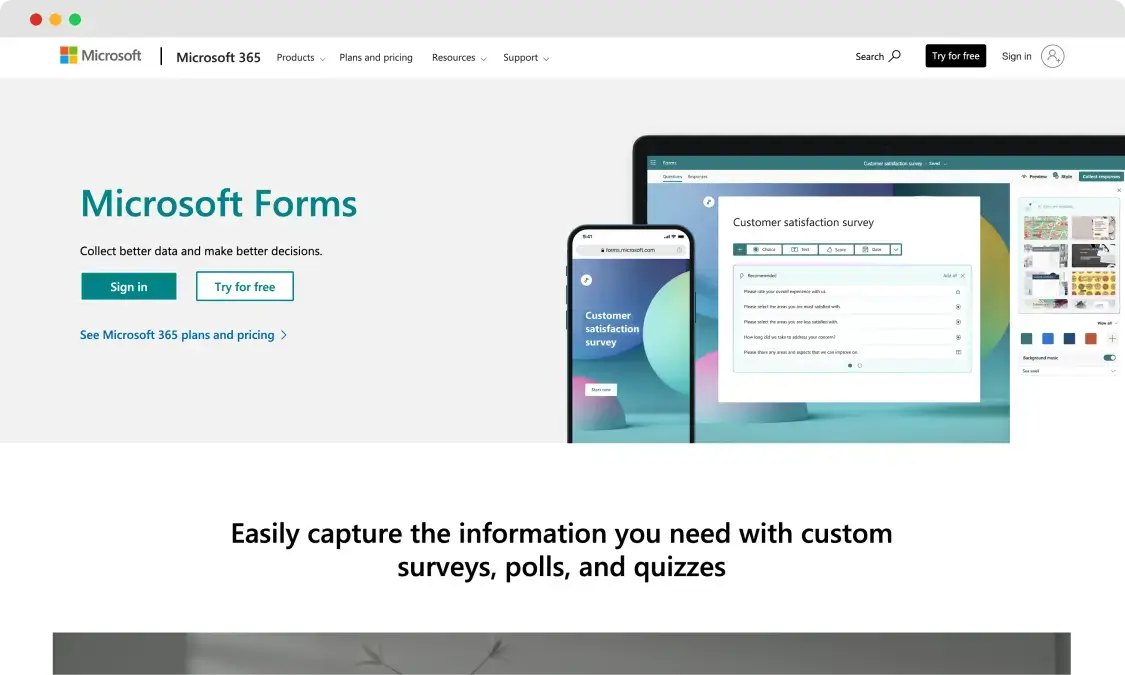
The home page of Microsoft Forms
When choosing a platform for your business, it is important to consider multiple options. That’s why exploring a new alternative can be very beneficial. forms.app offers all the necessary advanced features and innovative AI tools. Organizations of all fields and sizes can use it to craft various forms, including order forms, registration forms, customer surveys, and other essential documents.
Paperform vs. Microsoft Forms: 7 Essential points
When choosing a form builder platform, there are many factors to consider, ranging from the obvious ones like price and customer support to more complex features such as AI capabilities and collaboration tools. We identified the 7 most important factors to focus on when selecting between Paperform and Microsoft Forms:
1. Pricing
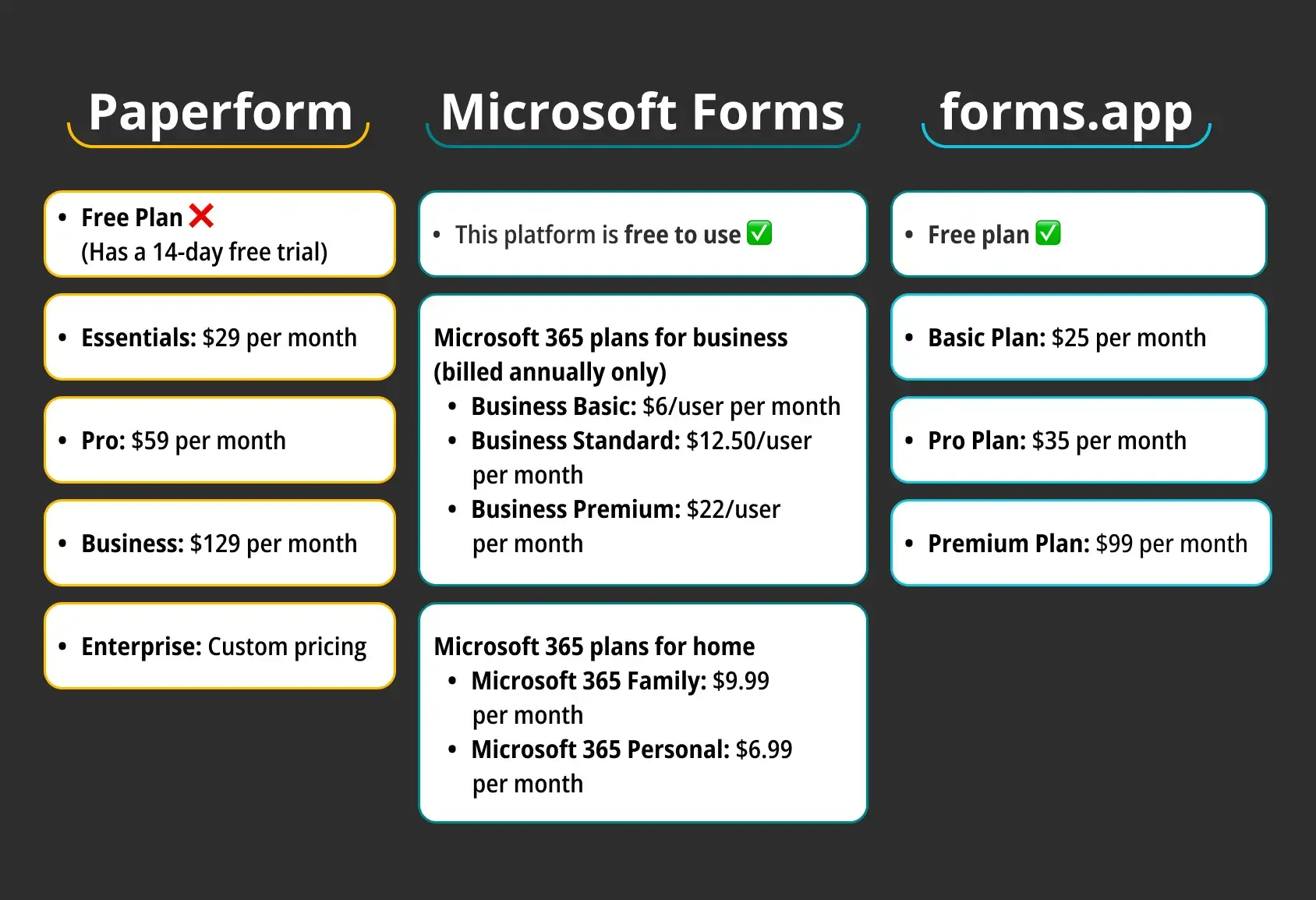
Pricing comparison between Paperform, Microsoft Forms, and forms.app
Paperform provides three plans, starting from $29 per month. The Essentials plan does not include advanced features like Calculations and e-signature options. The Pro plan is ideal for smaller teams, while the Business plan is designed for organizations requiring more compliance options. Additionally, Paperform offers a special Enterprise plan with many unlimited opportunities. Here are all of the Paperform pricing plans:
- Free Plan ❌(Has a 14-day free trial)
- Essentials: $29 per month
- Pro: $59 per month
- Business: $129 per month
- Enterprise: Custom pricing
Microsoft Forms is accessible for free, requiring only a Microsoft account. However, you need to be prepared for its limitations. For business purposes, there are Microsoft 365 Business plans with access to Word, Excel, and Outlook. Microsoft Forms is available on all premium plans except for Microsoft 365 Apps for Business. Here are all of Microsoft Forms’ pricing plans:
This platform is free to use✅
Microsoft 365 plans for business (billed annually only)
- Business Basic: $6/user per month
- Business Standard: $12.50/user per month
- Business Premium: $22/user per month
Microsoft 365 plans for home
- Microsoft 365 Family: $9.99 per month
- Microsoft 365 Personal: $6.99 per month
Consider forms.app as an excellent alternative, offering affordable prices. Even its free plan includes all necessary integrations and features, such as access to all field types and form templates. Starting at just $25 per month, forms.app is actually budget-friendly, especially compared to Paperform. You can take a look at all of its pricing plans:
- Free plan ✅
- Basic Plan: $25 per month
- Pro Plan: $35 per month
- Premium Plan: $99 per month
2. Form features
Speaking of unique form features, Paperform presents strong e-commerce options, supporting many payment providers like Stripe and PayPal. The tool also employs a unique approach to navigation, using slash commands for better user experience. Plus, Paperform's Calculation features, such as Custom Pricing Rules, enable real-time total calculations and fast field updates, making these complex tasks much easier.
On the other hand, Microsoft Forms is excellent for creating polls, quizzes, and surveys, with AI-powered tools and a unique Form Ideas feature for improving your form. It also offers multilingual capabilities, allowing forms to be sent and answered in multiple languages and branching logic to guide respondents through relevant questions based on their answers.
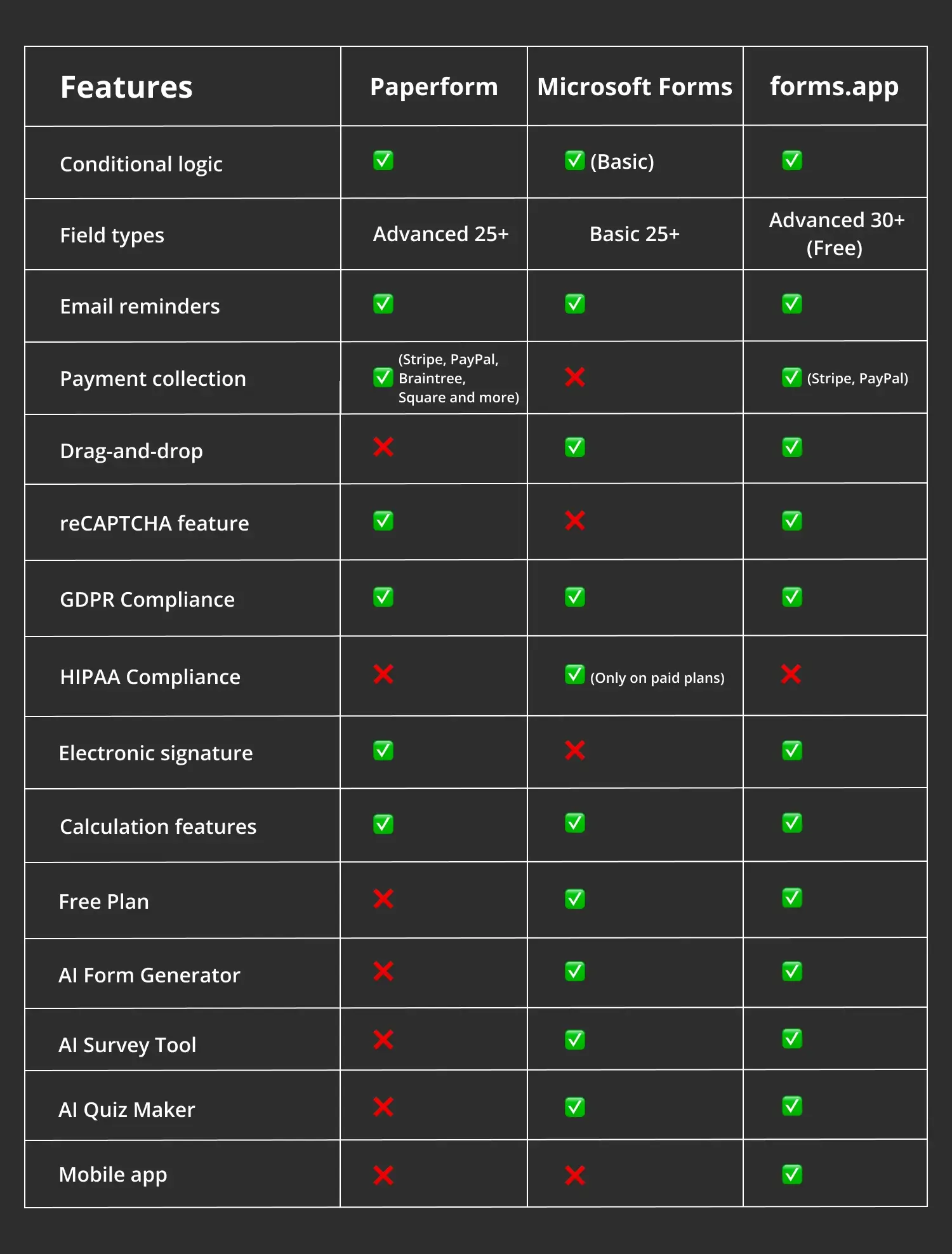
Feature comparison between Paperform, Microsoft Forms, and forms.app
3. Customization options
Paperform offers robust customization options to match your brand's identity. You can personalize pre-made templates by adding your logo, symbols, images, GIFs, and videos. Moreover, you can craft customizable thank-you pages and send emails automatically to engage user experiences. For more advanced users, Paperform supports HTML customization and the opportunity to add custom CSS for a high-quality form appearance.
Microsoft Forms has basic customization options similar to those found in simple form builder tools. Even so, it helps users adjust their forms and align them with their company branding. While its options are more limited compared to other platforms, users can still set the color theme, add logos, embed a custom image in the header, and change the background.
At the same time, forms.app presents all the essential options like selecting an animated background, applying themes, changing fonts, and choosing colors. Plus, it provides advanced features such as custom CSS for more professional or fancy designs. Additionally, it offers List and Step views for form display and even video upload as field media for better results.
4. Field types
A variety of form fields and question types significantly enhance the user experience, making forms easier to complete. Paperform has over 25 different fields for you to use. These fields include basics like Text, Email, and Phone Number, along with advanced options such as Color Picker, Scale, and Ranking. Additionally, Paperform supports scheduling with Google Calendar and complex Calculation fields.
With Microsoft Forms, you can build forms or surveys that cover your essential requirements using fields like Choice, Text, Rating, Date, Ranking, Likert scale, and File Upload. However, enriching your form with unique and advanced fields might be challenging due to its basic set of field types.
When comparing Paperform and Microsoft Forms, especially for form fields, you might want to look at the excellent alternative. forms.app offers all the standard options plus many unique ones for various purposes. It provides 30+ different and exclusive fields, such as Product Basket, Drawing Field, and Field Groups. Moreover, you can use all of them with the free plan.
5. Integrations
This point is crucial for any form builder tool, so we start with Paperform, which becomes a clear winner here. Paperform provides an impressive number of 2,000+ integrations to boost your work processes. It offers direct integrations with tools like Google Sheets, Trello, Asana, Mailchimp, Dropbox, and many more. Additionally, Paperform supports connections through Zapier.
While Microsoft Forms seamlessly integrates with the Microsoft Suite, including Outlook, OneDrive, Microsoft Teams, and other applications, it offers fewer integrations than you might expect from a powerful form-builder platform. Despite its strong integration within the Microsoft ecosystem, users may find themselves limited in connecting with other external tools and third-party apps.
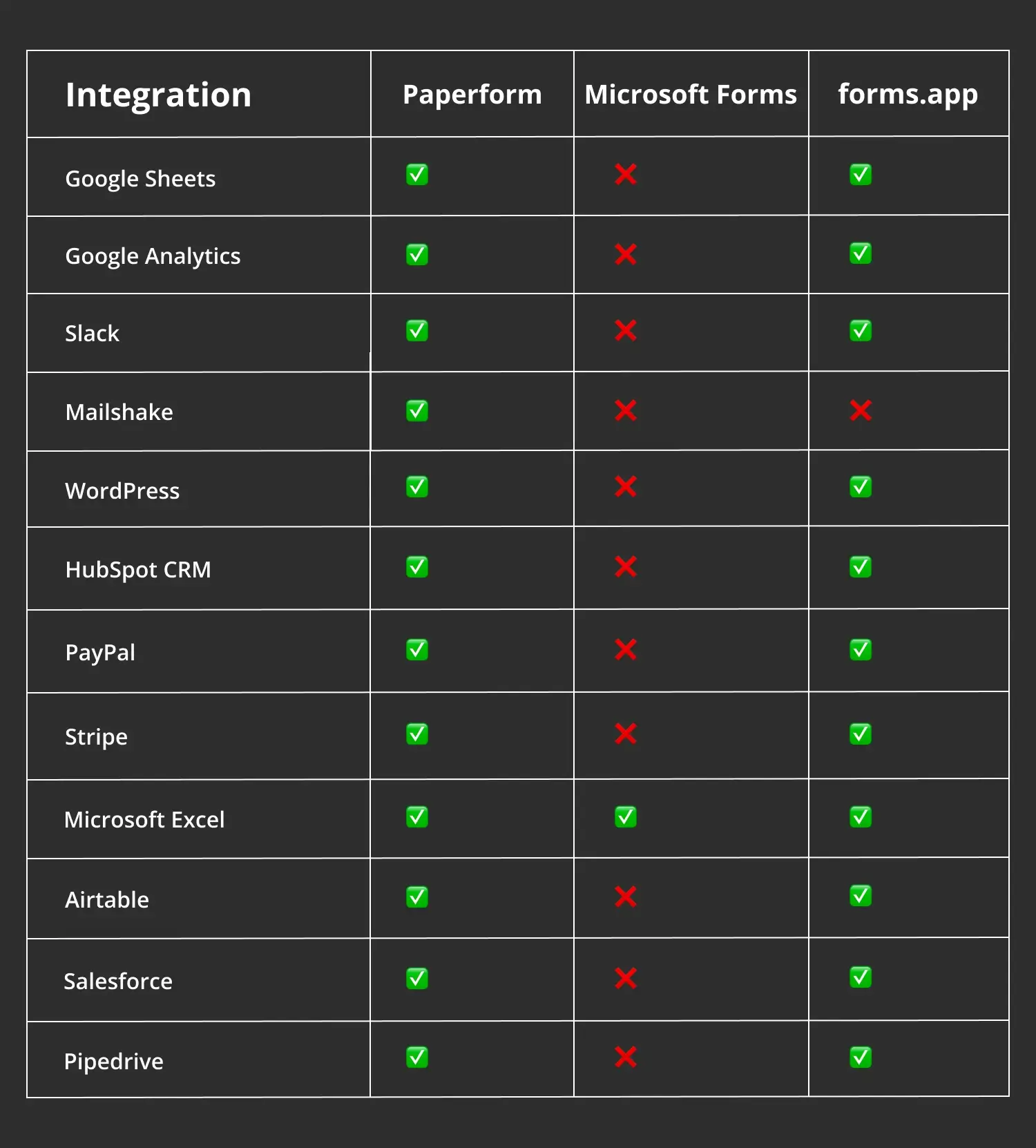
Integration comparison between Paperform, Microsoft Forms, and forms.app
6. Team collaboration
Paperform has collaboration tools like Teams, letting you invite others to access your account and give them access to your Paperform documents and forms. While its built-in collaboration features are basic, its strength in integrations means that collaborating with your work team can be easily organized through third-party apps like Linear, Microsoft SharePoint, Frame.io, and Miro.
Microsoft Forms easily connects with Microsoft Teams and SharePoint, making form sharing and collaborative editing easy within Microsoft 365. After creating a form, users can collaborate in real-time with others, such as professors or coworkers, with all edits visible to everyone. The platform offers sharing options for individuals or anyone within the organization, simplifying working together on the same document.
7. Templates
Paperform offers 650+ stylish and functional pre-built form templates, making it easy to find suitable templates and customize them within a few clicks. In contrast, Microsoft Forms has a smaller selection of templates, which are still useful for simple forms, event registrations, or surveys. You need to remember that each platform caters to specific needs with its template offerings.
Introducing the service with the largest template library among its competitors: forms.app. It has 5000+ fantastic templates for creating forms, surveys, quizzes, and documents. The extensive collection includes templates for all purposes, from simple contact and evaluation forms to more complex market research surveys. Additionally, these templates are available in different languages, making them accessible to a wider audience.
A better alternative: forms.app
After our comparison, you may have noticed that each tool has its own strengths and limitations. A service might excel in customization but have a complicated interface. Similarly, some tools are very easy to use but lack the advanced options needed to achieve your desired results. If you're still undecided between Paperform and Microsoft Forms, consider exploring their intriguing alternative.
forms.app is an AI-powered online form builder designed for businesses of all sizes. It offers all the essential features to simplify the creation of forms, surveys, and quizzes. Whether you're a small business or a large enterprise, its intuitive platform is perfect for collecting valuable data, making the process as easy as possible. Here are its key features:
- Easy to use: Whether you're a skilled user or just a beginner, forms.app features a drag-and-drop interface that is intuitive and straightforward. It helps you start the creation process effortlessly and achieve professional results. ✔️ ⏳
- Innovative AI tools: The platform offers AI-powered features like AI Form Generator, AI Survey Tool, and helpful AI Quiz Maker. These tools use AI powers to speed up your work processes, saving you valuable time and energy. 🤖🦾
- Integrations: forms.app seamlessly integrates with a variety of third-party apps, such as Slack, HubSpot, WordPress, Stripe, PayPal, and Google Drive. These integrations enable smooth connectivity and high productivity for your team. 🧩🤝
- Mobile app: You and your coworkers can easily create forms using mobile devices. There is a special mobile app on the Google Play Store and Apple Store for crafting forms on the go.📲🤳
- Rich template library: With a vast library of 5000+ pre-designed templates, forms.app offers solutions for every possible use case. Additionally, the templates are grouped by industries and purposes for easy access. 📚✨
Final words
To sum up, in the comparison of Microsoft Forms vs. Paperform, Paperform emerges as strong with its integration capabilities, making it ideal for online sales. Conversely, while basic in customization and form features, Microsoft Forms is remarkably user-friendly and offers a free version that can benefit firms with low budgets.
It is crucial to first identify your specific purposes and requirements from the tool before deciding. Dedicated form builders like Paperform and Microsoft Forms offer different strengths and features, so understanding your needs is key to choosing the right platform. You can choose between these two or opt for a better alternative by understanding your goals from the start.
Yulia is a content writer at forms.app. She has skills in advertising and translating. Using her knowledge in these departments, she researches marketing topics and creates articles. Yulia loves to travel, learn different languages, and explore new things. Her expertise lies in the best tools and marketing.
